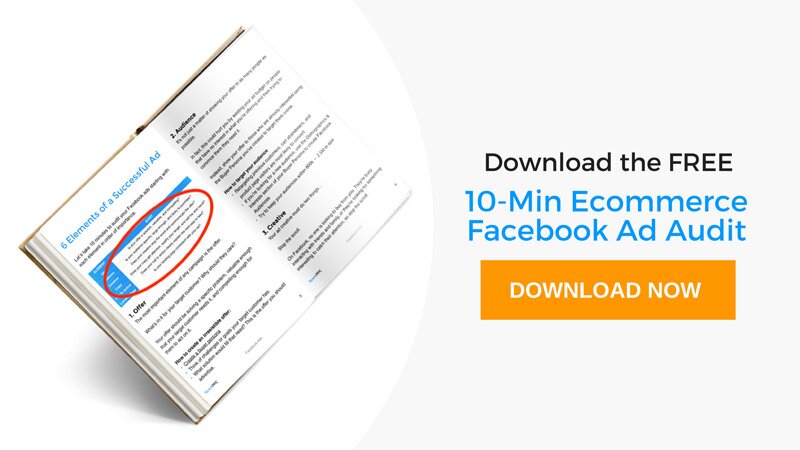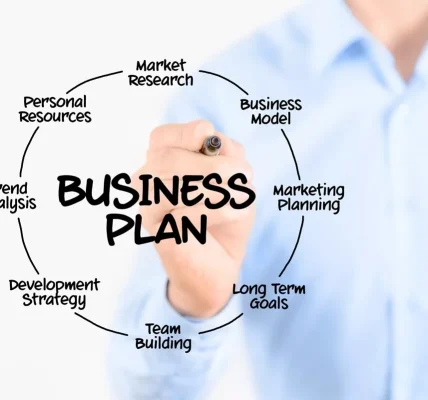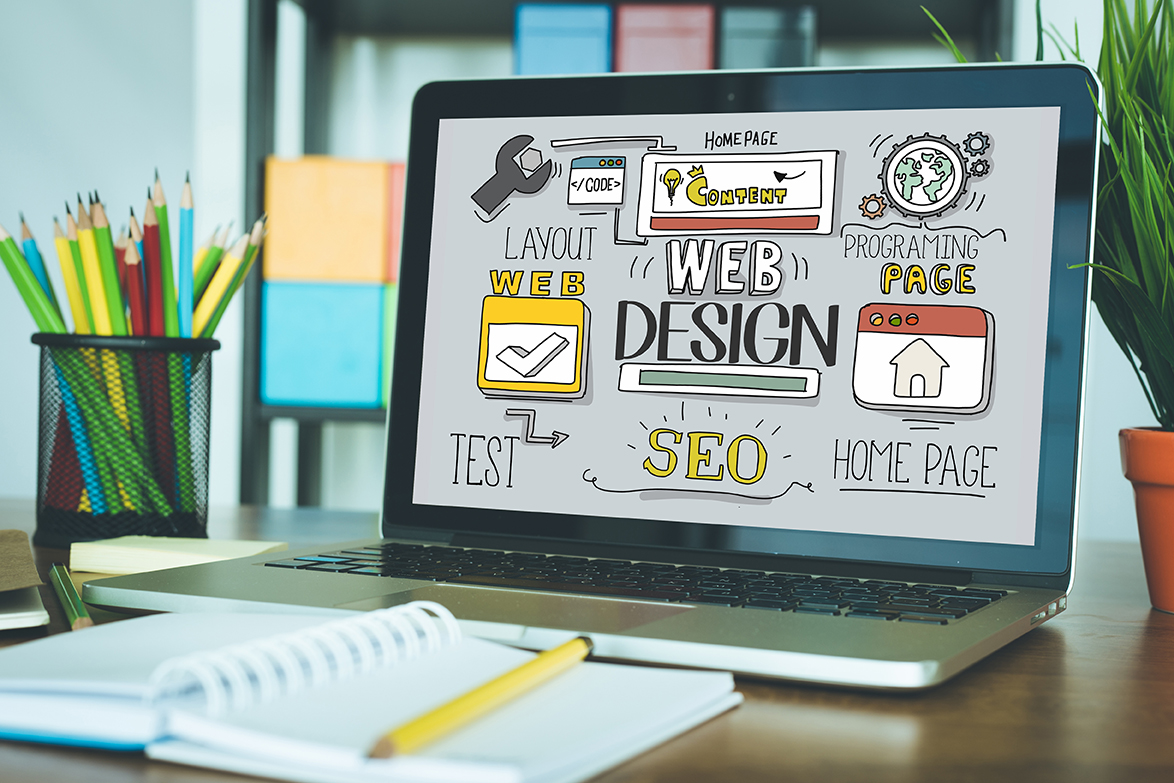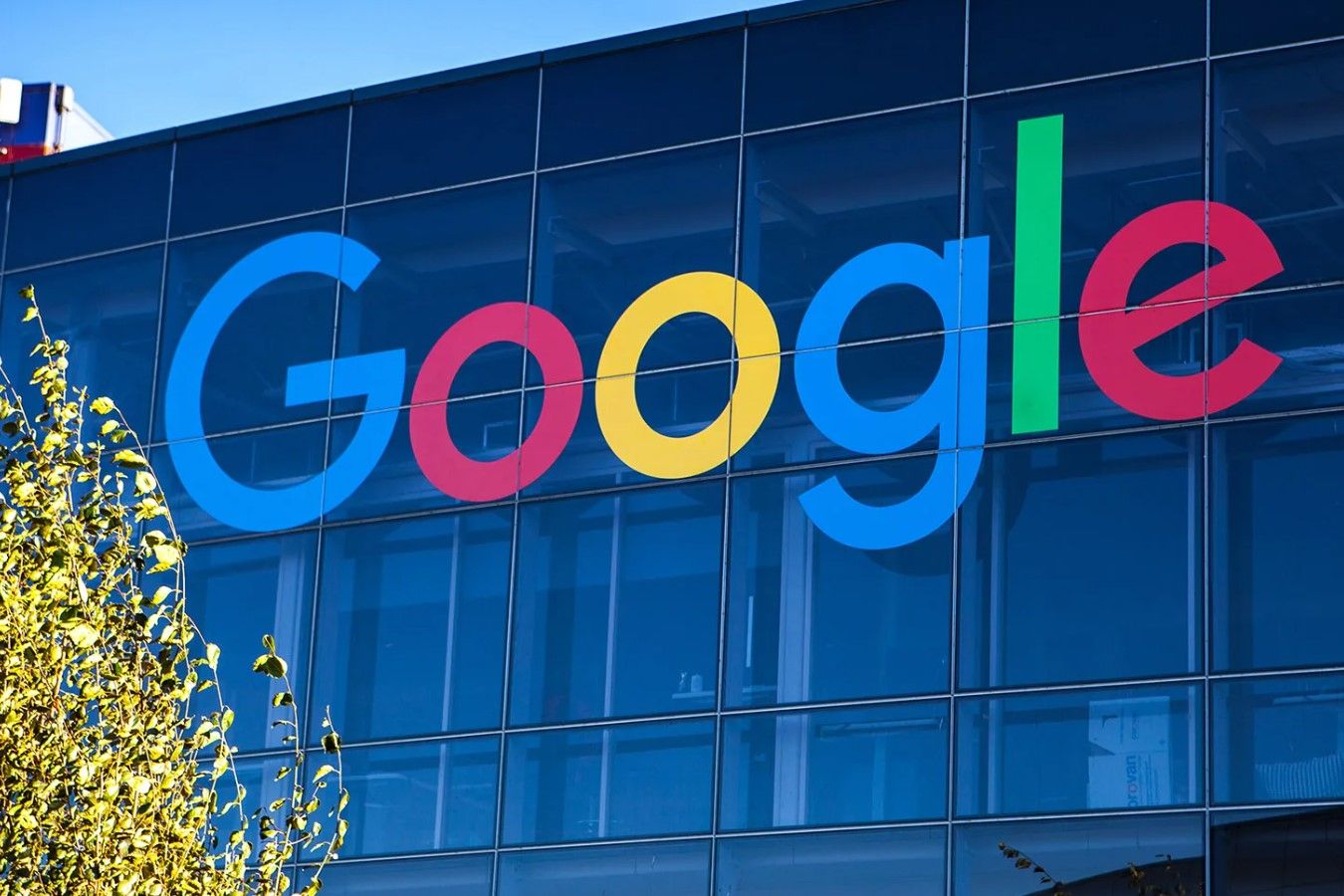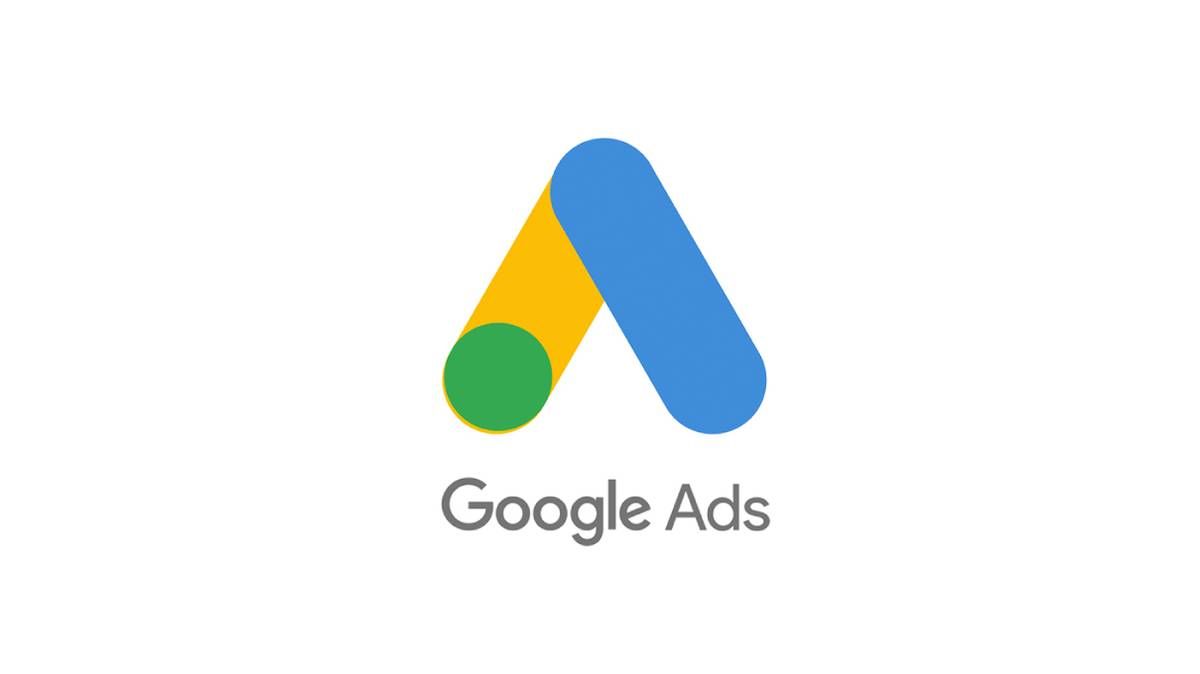So you want to create a fool-proof ecommerce PPC strategy?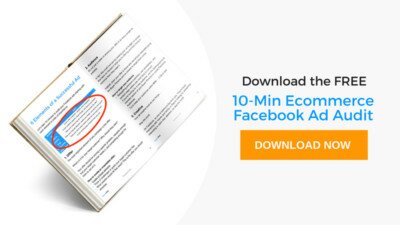
First, let’s define what your advertising strategy would look like:
- Acquires new leads
- Nurtures them into prospects
- Converts them into customers
That’s right! It should do all three at the same time.
And that’s because you want to create a full system that accomplishes those three goals so you won’t be running one campaign, but four…
So you’re thinking of running pay per click (PPC) advertising or improving your current approach to drive consistent sales for your ecommerce business.
And you should continuously improve your ecommerce pay per click strategy, because ecommerce is growing to be more than a $460+ billion industry in 2018, making it more competitive than ever.
So a well-defined and implemented strategy is absolutely crucial…
Also, for brick and mortar businesses, the rise of research online, purchase offline (ROPO) shows 39% of in-store buyers research online first.
This makes it the perfect opportunity to find your future customers first.
For anyone new to paid advertising, knowing what campaigns to set up can be confusing and downright intimidating. You know that if you can just set up the right ads, you’ll have tons of traffic coming to your store and getting sales in no time.
If you’re seasoned in running paid traffic you know just throwing up an ad on Facebook or Google may succeed in getting people to your site but will most likely fail at getting you sales.
Why?
Because not everyone is ready to buy.
What campaigns should you run?
You’re going to learn:
- Why you must not sell in order to sell
- How to set up a conversion funnel in under 5 minutes
- 4 best ad campaigns for ecommerce (you won’t need any others)
How to Sell By Not Selling
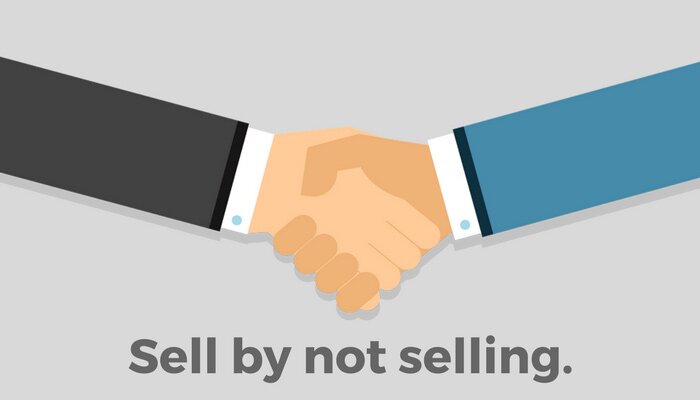
For those of you that have walked down Times Square in New York City, you know the feeling of getting directly sold to.
Countless peddlers fighting for your attention…
Comedy tickets and mixtapes shoved into your face…
Your impulse regardless of what’s being offered to you is an immediate, “No, thank you.”
This reflexive urge to say no is no different online. We have countless ads battling for our attention and trying to sell to us, and our reaction is the same, “No, thank you.”
continues scrolling…
What’s the common denominator here? Targeting people without buying intent.
In other words, you have to show ads that adhere to what stage of the customer’s journey your target customer is currently in.
How do you know what stage of the customer’s journey they’re in?
You start by analyzing the buyer’s journey and mapping an ecommerce conversion funnel over it.
I’ll explain…
What is the Buyer’s Journey?
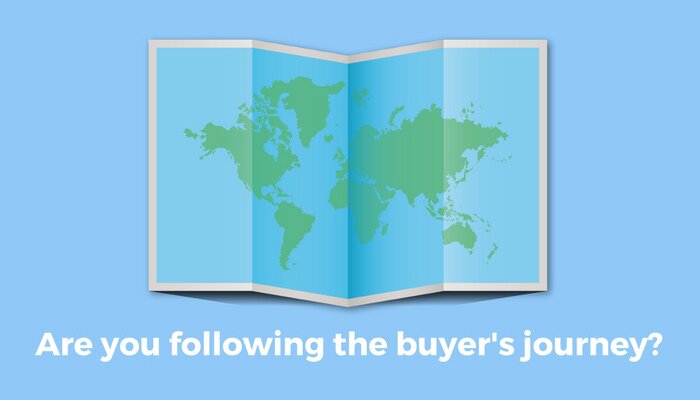
The buyer’s journey is your target customer’s progression from becoming aware of your brand, considering your products or services, and converting into a customer by making a purchase.
This journey comes in three stages: awareness, consideration, and conversion.
The 3 Stages of the Buyer’s Journey
Awareness
At this stage your target customer is either unaware that they have a problem or they discover they have a problem and begin looking for a solution.
You want to be found by your target customer to educate them on a solution to build trust, authority, credibility, and be top of mind.
This is done at the Acquisition stage of the conversion funnel.
How do they become aware that a problem exists?
- They realize they have a goal they want to achieve or a challenge they want to overcome
- If they’re unaware of a problem, you use those insights from the buyer persona to create problem awareness
Sound familiar? It’s from the Buyer Persona.
How do they look for a solution?
- They think of businesses who provide products that solve the problem
- They reach out to their personal network for recommendations
- They search on Google
Here’s an example:
You’re selling extended battery packs for mobile phones. Your target customer is a frequent traveler and backpacker.
They either realize they’ll need an extended battery for their next trip or you create problem awareness through content, such as a blog post: 10 Life Savers Backpackers Should Never Leave Home Without.
They’ll begin thinking of the last time they saw an extended battery brand, they’ll go on Facebook asking friends what brand they use, they’ll turn to Google for some guidance: best extended batteries for traveling.
This is why brand awareness is so important, you must educate your potential customer and become their guide.
Consideration
At this stage your target customer understands the problem and they’re weighing their options for a solution to purchase.
You want to engage your target customer by teaching them about the solution, your solution; and positioning yourself as the logical choice for a purchase.
You also want them to engage with you back by making a smaller investment up front, such as a low-risk purchase or an investment of time in learning more from you.
This is done at the Activation stage of the conversion funnel.
What goes through their mind during consideration?
- Is the problem big enough to warrant a purchase?
- Can I solve it myself?
- Do I trust them (you) enough to buy?
- Why should I buy from them (you) over (your competitor)?
Here’s an example:
Your target customer read your blog post and even purchased a low-risk, low-priced offer you made them. But, they haven’t yet purchased your core offer.
Conversion
At this stage your target customer makes a decision.
You want to really drive the message that has gotten them to engage with you. Really stress the end result and address any objections to a purchase.
They’re looking for a reason to pull the trigger and you’ll want to give them the nudge that they need.
This is done at the Conversion stage of the conversion funnel.
Here’s an example:
Your target customer after buying your tripwire sees a retargeting ad making them an offer to your core product. Logically, you’ve positioned yourself as the logical next step so they purchase.
The Conversion Funnel for Ecommerce
The conversion funnel presents your target customer with the steps you’ve placed during their buyer’s journey.
In other words, the customers are already on the journey, the funnel is your answer that gives your target customers steps to act on during their journey.
Acquisition
The purpose of the top of the funnel is to acquire targeted leads by getting the attention of your target customer.
Activation
The purpose of the middle of the funnel is to activate your leads into prospects by engaging with your customer and inducing a commitment of sorts.
Conversion
The purpose of the bottom of the funnel is to convert your prospects into customers after building a relationship and activating them with your first engagement offer.
Check here to build a conversion funnel for your ecommerce store.
4 Best Ad Campaigns For Ecommerce
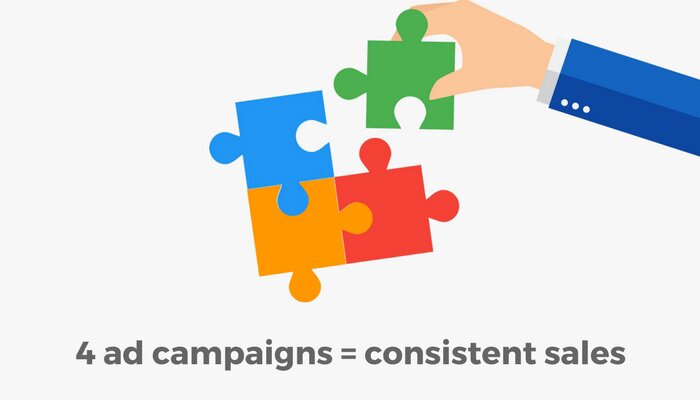
With these four ad campaigns, your ecommerce business can successfully drive traffic to your site and get consistent sales.
Brand awareness campaign
While you may be tempted to forego brand awareness ads because they’re not geared to make sales, doing so would hurt you in the long-run.
It’s with these brand awareness ads that we start to attract qualified leads down your funnel.
The brand awareness campaign has a four-pronged purpose:
- To introduce your brand to new target customers
- To drive traffic to your online store for retargeting later
- To stay at the top of your target customer’s mind
- To create problem awareness
Tripwire campaign
Very rarely do ecommerce businesses incorporate this into their customer acquisition strategy. The reason being, a tripwire campaign serves as a small low-risk offer to warm your leads into prospects.
A low risk offer can come in the form of a webinar, a free + shipping purchase, a low dollar purchase, etc.
The tripwire campaign has a 3-pronged purpose:
- To lead your target customer from the Awareness stage to Consideration
- To engage and establish trust
- To position yourself as the logical solution for a purchase
Core offer campaign
This is the campaign where you ask for the sale.
If you’re running all other campaigns simultaneously, then you’ve gotten to the point where you’ve acquired new leads to your store, you’ve engaged and warmed them up through a small offer, and now you’ve positioned yourself as the authority and sole solution.
Now you’re ready to ask for the sale with this campaign for your core product.
The purpose of the core offer campaign is simple:
Remarketing campaign
As marketer, I can guarantee with certainty, most of your audience won’t buy with the core offer ad.
Know this, we also add remarketing campaigns either at the end of top 3 campaigns or at the very least for the ones that don’t convert on the Core Offer campaign.
The truth is, on average it takes 6-8 touch points for a consumer to purchase from you. With this in mind, it’s no secret that remarketing can often bring in the bulk of sales.
The purpose of remarketing:
- To convert prospects that did not initially convert
TL;DR
Here’s a quick summary:
- You need an ecommerce PPC strategy that acquires new leads, nurtures them into prospects, and converts them into customers
- Hard selling no longer works in the digital age, your customers are smarter than that
- Map out your conversion funnel over your buyer’s journey
- Run a minimum of 4 types of ad campaigns to drive consistent sales (Brand awareness, tripwire, core offer, and remarketing)
Your Turn
What’s your current ad campaign system look like?
Audit your Facebook ad in 10 minutes with this FREE guide.
